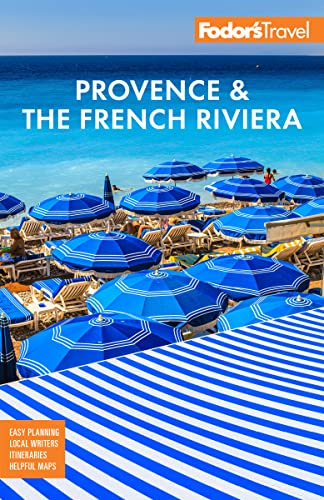Provence's Wines
As the world has now discovered, there is a wine that is neither red nor white: rosé, a versatile wine you can drink with almost anything. Delightfully, light rosés are the perfect summer wines—and, happily, Provence turns out to be the rosé capital of France.
The Mediterranean embodies a long tradition of making fruity, dry rosés, and Provence has several appellations counting rosé as up to three-quarters of their production. Demand for it has grown greater since people have discovered that rosés are not just for summer. Still, it came as shocking news to learn the French consume more rosé than white wine. How could the most educated drinkers in the world prefer pink wine over a buttery white Burgundy? Fingers pointed directly to three main regions that have developed an amazingly sophisticated rosé wine culture: the Côtes du Rhône, Côtes de Provence, and Côteaux d’Aix-en-Provence.
La Vie en Rosé
One sip and you'll agree: rosé wines taste wonderful along the Riviera. Some experts even claim that the sea air enhances the aroma (perhaps why a Côtes de Provence rosé loses some of its magic at home). Rosés are usually drunk icy-cold, whether to quench arid thirsts or to hide a less-than-rounded finish. Try a top-rated Bandol at least once, but you can't go wrong with a good local quaffer.
While reds and whites are strong in Provence—the most famous red is Châteauneuf-du-Pape, while Cassis is the top white-producing area—more people choose to stop and taste the rosés.
The vast region of Côtes de Provence stretches across the Var towards Marseille to the west and Grasse to the east; its scores of vineyards produce everything from cheap plonk to serious vintages. Château Minuty (Route de Ramatuelle 04–94–56–12–09 www.chateauminuty.com), near St-Tropez, is found on almost every wine list in the area in dry white, fruity rosé and medium-bodied red. Another top vineyard is Château Sainte-Marguerite (Le Haut Pansard, La Londe les Maures 04–94–00–44–44 www.chateausaintemarguerite.com), which produces full-bodied reds, lively rosés, and tasty whites.
Côteaux d’Aix-en-Provence spreads out from the Rhône River to the St-Victoire mountain. Rosés from this area are often described as "zingy" or "fruity," while reds and whites range from solid to reasonable. Two names to look for are the stellar rosés of Domaine Sainte Lucie (Avenue Paul Cézanne, C 06–81–43–94–62 www.mip-provence.com) and the Château Lafoux (RN7, near St-Maxime 04–94–78–77–86 www.chateaulafoux.com), with a subtly perfumed white and rosé.
A wine to be reckoned with, Bandol rivals Châteauneuf-du-Pape as the region's reigning red. Although pricey, Bandol rosés and whites are luscious and inviting. Domaine Tempier (Le Plan de Castellet 04–94–98–70–21 www.domainetempier.com), one of the region's oldest producers, is renowned for its distinctive reds and stunning rosés. In Côtes du Rhône, along the Rhône delta, growers tend to focus on organic red wine and rosés. Tops are Domaine Pastouret (Rte. de Jonquieres, Bellegarde 04–66–01–62–29 www.domaine-pastouret.com) and the Château de Campuget (Mas du Campuget, Manduel 04–66–20–20–15).
Châteauneuf-du-Pape is fondly regarded as the king of reds in Provence. The wines are opulent and warm, and have a high alcohol percentage (up to 14%). Noted names include Domaine Chante Cigale (Avenue Louis Pasteur 04–90–83–702–57 www.chantecigale.com) and Château Rayas (Rte. De Courthezon 04–90–83–73–09 www.chateaurayas.fr).
Beaumes de Venise is an appellation that is world-renowned for its muscat dessert wine, made since the 14th century. The pale-gold wines are sweet and fruity with a high alcohol content (more than 15%) and pair well with foie gras.




